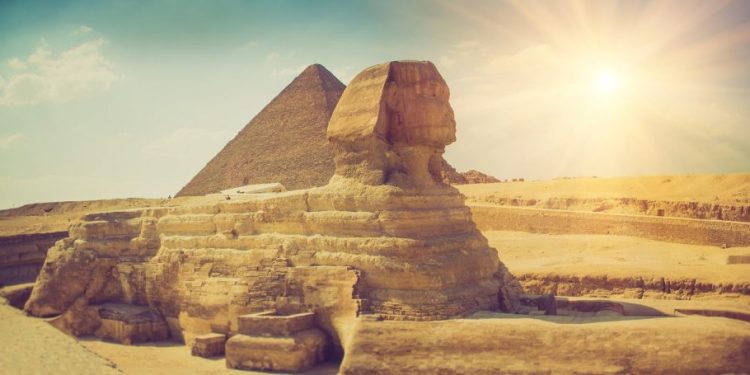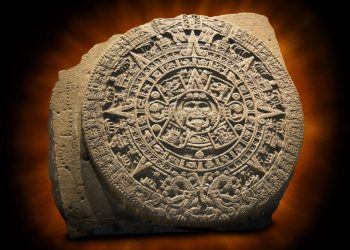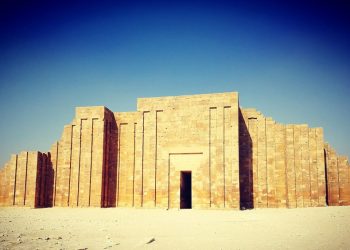Numerous authors and scholars have analyzed the pyramids and Sphinx area, looking for signs that may reveal how these majestic structures were built.
Excavations, together with ground-penetrating radar, have revealed many clues.
And among the several discoveries made at the Giza plateau are a few that may indicate that these majestic structures were once submerged underwater.
Numerous books, articles, and studies argue with compelling evidence that the pyramids and the Sphinx show clear signs of water damage/erosion.
But just how crazy is that?
Crazy enough that the theory behind water erosion on the Sphinx and the pyramids has been dubbed a fringe claim.
But let’s go with it and see what we can find out? The first question would be; when was the last time that the Giza plateau was flooded? And to what extent was it flooded?
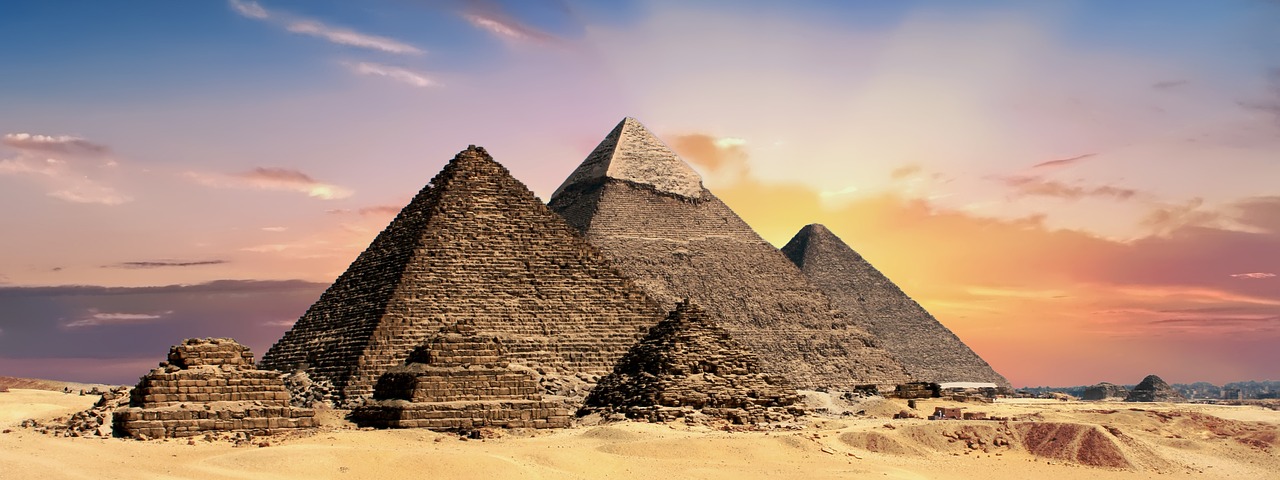
It was Robert Schoch who first proposed that the Sphinx’s water erosion marks may be indicative of its origins spanning back in history before the Egyptian civilization came into existence.
In the 1990s, Schoch suggested that the Great Sphinx of Giza most likely dates back to 5000–9000 B.C., and his claims were based on water erosion patterns found on the Sphinx and surrounding landscape.
A strange fossil
One researcher who may have found evidence of that was archeologist Sherif El Morsi who spend decades working on the Giza Plateau, trying to unravel its mysteries.
During one of the many analyses performed on the Giza plateau, El Morsi, together with Antonine Gigal, came across a strange fossil, an exoskeleton of a fossil of what appeared to be a sea urchin.
“During one of the documentations of the ancient coastline, I almost tripped with a block of the second level of a temple,” explained Mr. El Morsi in an article published on the website Gigal Research.
“To my surprise, the bump on the top surface of the block that almost tripped me was, in fact, an exoskeleton of a fossil of what appears to be an echinoid (sea urchin) which are marine creatures that live in relatively shallow waters.”
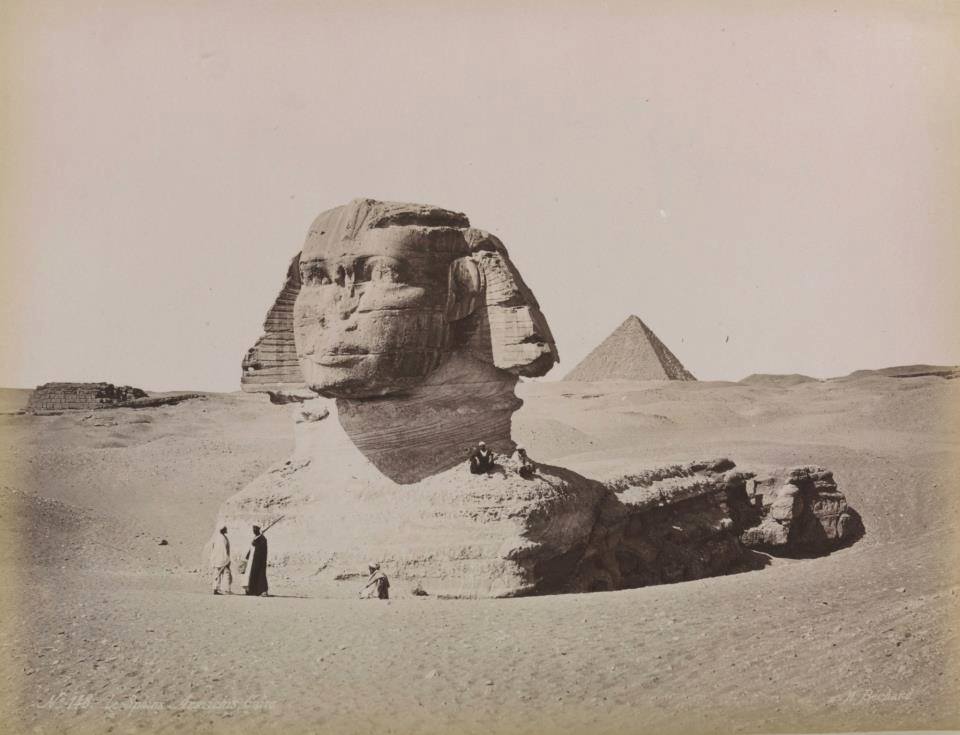
Sphinx Surrounded by a Moat?
According to Robert Temple, to understand the weathering patterns visible on the Sphinx, we must dig deeper and look at other explanations.
Temple argues that if we consider the possibility that the Sphinx was surrounded by a moat, we may find many of the answers we’ve been searching for.
Temple’s theory suggests that a moat theory may explain the water weathering patterns on the Sphinx without needing to hypothesize that the Sphinx origins can be traced to earlier periods of much larger rainfall than at present.
But Robert Schoch disagrees, saying that there are several reasons why this theory doesn’t hold ‘water.’
One of the most compelling, claims Schoch, is that the Sphinx has various vertical fissures that have been observed on the walls of the Sphinx Enclosure and how they are signs of precipitation and water runoff.
The Moat theory can’t explain that, claims Schoch.
Older than Egypt
Schoch had maintained that based on his studies, the core body of the statue must date back to a period around 5,000 B.C. and that there are even signs that its origins can be traced back to a period during the last ice age, around 10,000 B.C. He claims that there was some renovation work done on the Sphinx sometime during the Old Kingdom.
The consensus among experts is that the great Sphinx of Giza was carved around 2,500 B.C.
Schoch argues that the heavy weathering erosion marks around the Sphinx were most likely produced sometime before 5,000 B.C., when Egypt had a different climate than today.
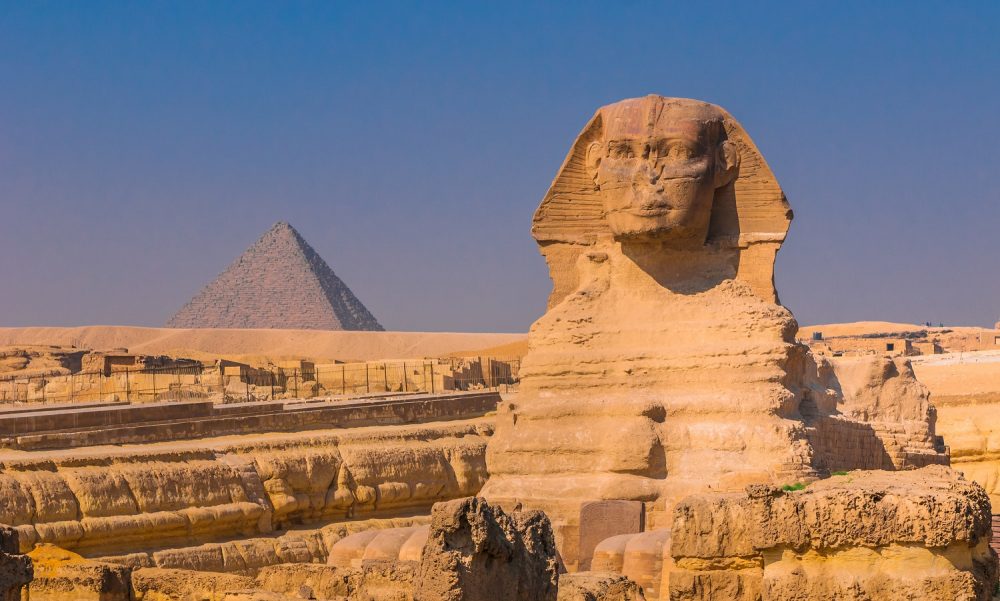
A refreshing opinion
While going to sources about the Sphinx, its age, and the debate whether it was submerged below water, I came across an article written by Dr. James A. Harrell, a professor of geology and the chairman of the Department of Geology at the University of Toledo.
I found an extremely interesting excerpt in his well-detailed article where Dr. Harrel argues that during past excavations of the Giza plateau, the accumulated sand was discovered being “completely soaked with water a few inches below the surface,” with “the bedrock in contact with the sand [also] …soaked with water.”
“The lower few meters of the Sphinx enclosure and the lower several meters of the temples would have suffered the most from a wet sand cover. Accelerated weathering, especially of the marly limestones, would result from clay expansion during wetting, and salt (halite and gypsum) precipitation during drying,” revealed Dr. Harrell.
In other words, the erosion marks we see on the Sphinx today may be due to a combination of sand and water, sand-soaked water.
Even more interesting is that, according to Harrel’s article, the Sphinx enclosure is located around 20.2 meters above sea level, not far from the base of the Giza plateau. The walls of the Sphinx’s enclosure and the back of the massive stone statue have been measured to rise between 5 to 10 meters respectively above the floor.
Harrel notes in his article that the Valley and Sphinx’s temple have elevations varying between 17 and 17.5 meters.
The geologist notes that the normal Nile-Flood maximum at the Roda Nilometer located not far from Cairo has ranged with floods from 19 and 19.5 meters this century. However, there have been exceptionally high floods reaching 20.3 meters in 1938 and 21.4 meters in 1874.
And during the past two centuries, there are well-recorded reports of floodwater reaching the base of the Giza plateau.
Join the discussion and participate in awesome giveaways in our mobile Telegram group. Join Curiosmos on Telegram Today. t.me/Curiosmos



